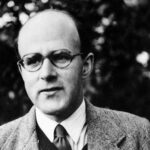Steven Paul Jobs (born Abdul Lateef Jandali, (February 24, 1955 – October 5, 2011) was an American business magnate, inventor, and investor. He was the co-founder, chairman, and CEO of Apple; the chairman and majority shareholder of Pixar; a member of The Walt Disney Company’s board of directors following its acquisition of Pixar; and the founder, chairman, and CEO of NeXT. He was a pioneer of the personal computer revolution of the 1970s and 1980s, along with his early business partner and fellow Apple co-founder Steve Wozniak.
Life and Career
Born on February 24, 1955, in San Francisco, California, to unmarried graduate students Joanne Schieble and Abdulfattah Jandali, a Syrian immigrant, Jobs was adopted as a baby by Paul Jobs, a Silicon Valley machinist, and his wife Clara. After graduating from high school in Cupertino, California, in 1972, Jobs attended Reed College, a liberal arts school in Portland, Oregon, for a single semester before dropping out. He later worked briefly for pioneering video game maker Atari in California, traveled to India, and studied Zen Buddhism.
In 1976, Jobs and his computer engineer friend Stephen Wozniak founded Apple Computer in Jobs’ parents’ garage in Los Altos, California. As Bloomberg News would later note about Jobs: “He had no formal technical training and no real business experience. What he had instead was an appreciation of technology’s elegance and a notion that computers could be more than a hobbyist’s toy or a corporation’s workhorse. These machines could be indispensable tools.” In 1977, Jobs and Wozniak launched the Apple II, which became the first popular personal computer. In 1980, Apple went public and Jobs, then in his mid-20s, became a multimillionaire. Four years later, Apple debuted the Macintosh, one of the first personal computers to feature a graphical user interface, which allowed people to navigate by pointing and clicking a mouse rather than typing commands.
In 1985, Jobs left the company following a power struggle with Apple’s board of directors. That same year, he established NeXT, a business that developed high-performance computers. The machines proved too pricey to gain a wide consumer audience; however, British computer scientist Tim Berners-Lee developed the World Wide Web using a NeXT workstation. In 1986, Jobs acquired a small computer graphics studio founded by filmmaker George Lucas and rechristened it Pixar Animation Studios. In 1995, Pixar released its first film, “Toy Story,” the first-ever feature-length, computer-animated movie. It became a huge box-office success and was followed by such award-winning hits as “Finding Nemo” (2003) and “The Incredibles” (2004). In 2006, Walt Disney Company purchased Pixar for more than $7 billion, making Jobs the largest Disney shareholder.
In late 1996, Apple, which had floundered without Jobs, announced it would buy NeXT and hire Jobs as an advisor. The following year, he became Apple’s interim CEO (the “interim” was dropped in 2000), and under his leadership a nearly bankrupt Apple was transformed into one of the planet’s most valuable corporations. A charismatic, demanding perfectionist, Jobs was said to possess the ability to intuit what customers wanted before they knew it themselves. In his trademark jeans and black mock turtleneck, the tech titan turned product launches into highly anticipated events, and Apple introduced a series of innovative digital devices, including the iPod portable music player in 2001, the iPhone in 2007 and the iPad tablet computer in 2010, that became part of everyday modern life. (In early 2007, Jobs announced that Cupertino-based Apple was dropping “Computer” from its official moniker to reflect the fact the company’s focus had shifted from computers-only to mobile electronic devices).
Despite a series of medical issues, including surgery in 2004 to remove a pancreatic tumor and a 2009 liver transplant, Jobs continued to lead Apple until August 24, 2011, when he stepped down as the company’s chief executive. Six weeks later, he passed away at his Palo Alto, California, home. On October 5, 2011, Steve Jobs, the visionary co-founder of Apple Inc., which revolutionized the computer, music and mobile communications industries with such devices as the Macintosh, iPod, iPhone, and iPad, died at age 56 of complications from pancreatic cancer.
At the time of his death, Jobs, a father of four, had a net worth estimated at more than $7 billion. According to biographer Walter Isaacson, Jobs “was the greatest business executive of our era, the one most certain to be remembered a century from now. History will place him in the pantheon right next to Thomas Edison and Henry Ford.”
Family
Steve Jobs had a relatively small family, and he was known to be a private individual when it came to his personal life. Here’s some information about his family:
- Parents:
- Steve Jobs was born on February 24, 1955, to Joanne Schieble and Abdulfattah Jandali. He was adopted as an infant by Paul Jobs and Clara Hagopian. His adoptive parents raised him in Mountain View, California.
- Siblings:
- Steve Jobs had one biological sister, Mona Simpson, who is a famous novelist. Although they didn’t grow up together and only met later in life, they eventually developed a close relationship.
- Spouse:
- Steve Jobs married Laurene Powell Jobs (née Brennan) in 1991. Laurene Powell Jobs is an entrepreneur and philanthropist. They had three children together: Reed, Erin, and Eve.
- Children:
- Reed Paul Jobs: Born in 1991, Reed is the eldest child of Steve and Laurene. He has kept a relatively low public profile but has been involved in technology and philanthropy.
- Erin Siena Jobs: Born in 1995, Erin is the second child of Steve and Laurene. Like her brother, she has generally stayed out of the public eye.
- Eve Jobs: Born in 1998, Eve is the youngest child of Steve and Laurene. She, too, has maintained her privacy.
Steve Jobs’ family, especially his widow Laurene Powell Jobs, has continued to be involved in philanthropic efforts and is associated with various educational and charitable initiatives. While Steve Jobs was a highly public figure due to his role at Apple, he was known for keeping his family life relatively private.
Legacy
Steve Jobs, the co-founder of Apple Inc., left a profound legacy that continues to influence the world of technology, design, and business long after his passing in 2011. Here are some key aspects of Steve Jobs’ legacy:
- Innovation and Design Excellence: Steve Jobs was known for his obsession with design and user experience. He believed in creating products that were not only technologically advanced but also aesthetically pleasing and user-friendly. This emphasis on design excellence can be seen in products like the iPhone, iPad, and MacBook, which have set industry standards.
- Apple’s Product Lineup: Under Jobs’ leadership, Apple released groundbreaking products that revolutionized entire industries. The iPod, iPhone, and iPad, in particular, changed the way people listen to music, communicate, and consume media. These products have had a lasting impact on consumer electronics and continue to generate substantial revenue for Apple.
- Retail Innovation: Jobs played a significant role in redefining the retail experience with the introduction of Apple Stores. He believed that the shopping environment should be as carefully crafted as the products themselves. The Apple Store concept, with its minimalist design and highly trained staff, has been widely emulated in the retail industry.
- App Ecosystem: The App Store, launched in 2008 under Jobs’ leadership, has become a cornerstone of the mobile app ecosystem. It created a platform for developers to distribute and monetize their apps, and it has since grown to offer millions of apps across various categories, driving the success of the iOS ecosystem.
- Pixar Animation Studios: Steve Jobs acquired Pixar Animation Studios in 1986 and played a pivotal role in transforming it into a major animation studio. Under his guidance, Pixar produced groundbreaking films like “Toy Story,” “Finding Nemo,” and “The Incredibles,” which revolutionized the animation industry and paved the way for the digital animation renaissance.
- Leadership Style: Jobs was known for his charismatic and demanding leadership style. He had a reputation for pushing his teams to achieve excellence and for his intense focus on product details. While this approach could be challenging, it also inspired a sense of purpose and dedication among Apple employees.
- Entrepreneurial Spirit: Steve Jobs’ journey as an entrepreneur and his willingness to take risks serve as an inspiration to aspiring entrepreneurs. He co-founded Apple in his garage, was ousted from the company, and then returned to lead it to unprecedented success. His story demonstrates the importance of perseverance and innovation in entrepreneurship.
- Personal Brand: Jobs’ personal brand, characterized by his iconic black turtleneck, jeans, and minimalist style, has become synonymous with Apple’s brand identity. His keynote presentations, known for their “One more thing…” surprises, generated immense anticipation and excitement among consumers and the tech industry.
- Philanthropy: While not as well-known for his philanthropic efforts as some other tech leaders, Jobs did make significant donations to causes like education and healthcare. He also inspired others in the tech industry to engage in philanthropy and give back to society.
Overall, Steve Jobs left a legacy of innovation, design excellence, and disruptive thinking that continues to shape the tech industry and inspire entrepreneurs and creators around the world. His impact on the way we live, work, and communicate is undeniable, and his influence endures beyond his lifetime.
Tags: Abdul Lateef Jandali, how did steve jobs die, Laurene Powell Jobs, movie of steve jobs, steve jobs in the garage, when did steve jobs die, young steve jobs












